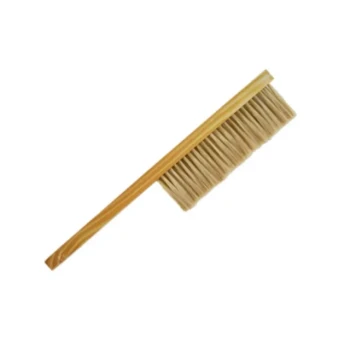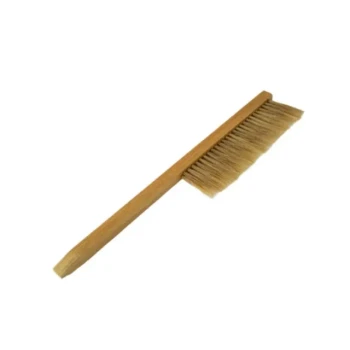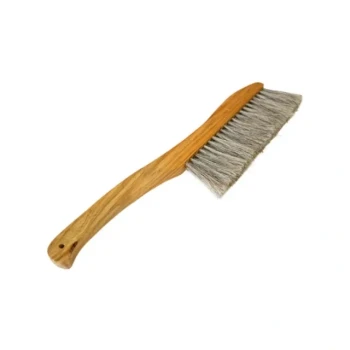A bee brush is a specialized tool used by beekeepers to gently sweep bees off frames without causing them harm. Its primary purpose is to clear an area for work, such as during a hive inspection or, most commonly, when harvesting honey.
The central purpose of a bee brush is to provide a gentle, non-lethal way to move bees. However, because bees find the sensation irritating, its effectiveness is defined by sparing and delicate use, not by routine application.
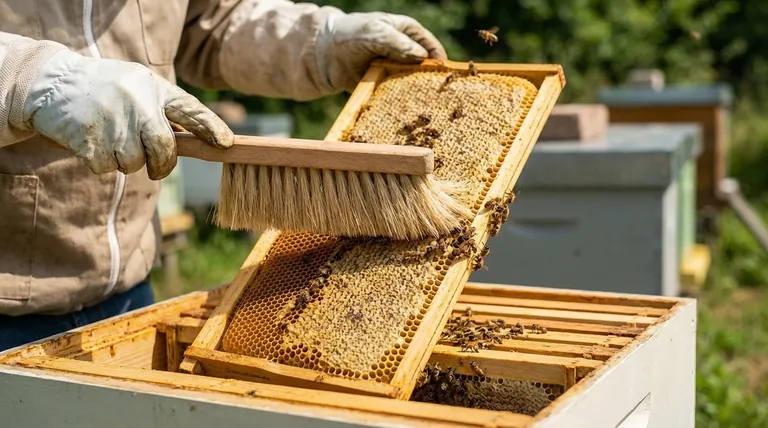
The Primary Role: Clearing Frames for Work
A bee brush serves a very specific function: to create a bee-free surface on a hive frame so the beekeeper can safely work with it.
During Honey Harvesting
The most common use for a bee brush is during the honey harvest. Beekeepers must remove the bees from a frame of honey before taking it to be uncapped and placed in an extractor.
A gentle, downward sweep with the brush clears the bees, allowing the beekeeper to move the frame away from the hive.
For Hive Inspections and Repairs
During an inspection, you may need a clear view of the brood pattern or need to repair a broken piece of comb.
The brush allows you to carefully move bees out of the way to get a better look or perform a delicate task without crushing them.
For Swarm Removal
When capturing a swarm, a bee brush can be useful for gently encouraging the last clusters of bees to move from a surface into a collection box.
Understanding the Trade-offs: Why Less is More
While useful, a bee brush is not a tool to be used casually. Understanding the bees' reaction to it is critical for maintaining a calm hive.
The Bee's Perspective
Bees generally dislike being brushed. The sensation is unnatural and invasive, and they often interpret it as a threat from a large, hairy predator.
The Risk of Agitation
Improper or excessive use of a bee brush will agitate the colony. The bees may become defensive, stinging the brush bristles and potentially the beekeeper.
This is why the brush should be used with a soft, deliberate motion, not a frantic scrubbing action.
The Superiority of Natural Bristles
A high-quality bee brush is typically made from long, soft, natural fibers like horsehair.
These materials are less likely to build up static electricity, which can shock and further irritate the bees. They also tend to collect less sticky honey and propolis than synthetic brushes.
How to Apply This to Your Beekeeping
Your goal dictates how and when you should reach for the brush.
- If your primary focus is a calm harvest: Use gentle, downward sweeps to clear a frame, reserving the brush for bees that don't come off with a firm shake.
- If your primary focus is a routine inspection: Rely on a gentle puff of smoke or a light shake to move the majority of bees, using the brush only for the stubborn few.
- If your primary focus is saving a broken comb: Use the brush to delicately shepherd bees away from the damaged area so you can perform repairs without injuring them.
Mastering the bee brush means knowing when to use it, but more importantly, when a gentler alternative is the better choice.
Summary Table:
| Primary Use Case | Key Benefit | Best Practice |
|---|---|---|
| Honey Harvesting | Gently clears bees from honey frames without harm | Use sparingly with soft, downward sweeps |
| Hive Inspections | Provides clear view of brood pattern for assessment | Use only after a light shake of the frame |
| Swarm Removal | Encourages bee clusters into a collection box | Apply with delicate, guiding motions |
Achieve a Calmer, More Productive Apiary with the Right Tools
Mastering gentle bee handling is key to successful hive management. At HONESTBEE, we supply commercial apiaries and beekeeping equipment distributors with high-quality, gentle-handling tools—like premium natural bristle bee brushes—designed to minimize hive stress and maximize your operational efficiency.
Let us equip you for success. Contact our wholesale experts today to discuss your apiary's specific needs and discover how our reliable beekeeping supplies can support your business.
Visual Guide
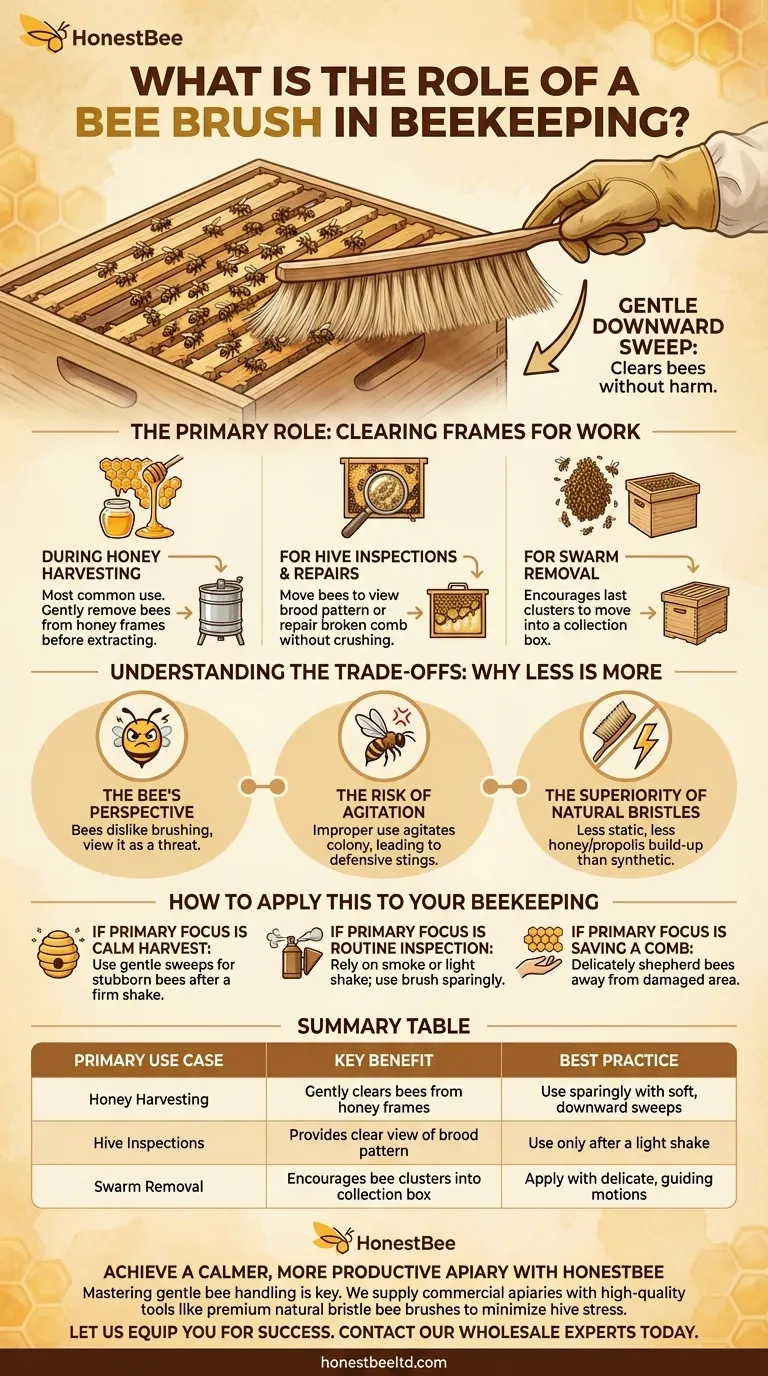
Related Products
- Wooden Bee Brush with Double-Row Horsehair Bristles
- Double Row Artificial Fiber Bee Brush for Beekeeping
- Classic Wooden Bee Brush with Double-Row Boar Bristles
- Premium Triple-Row Horsehair Bee Brush
- Wooden Bee Brush with Triple Row Artificial Fiber for Beekeeping
People Also Ask
- What are the characteristics of a bee brush's bristles and handle? Gentle Tools for Healthy Hives
- How effective are brushes as a smoke alternative in beehives? Avoid Agitating Your Hive
- How is a bee brush used in beekeeping? Master Gentle Bee Handling for Your Apiary
- What is a bee brush used for? Gently Sweep Bees from Honeycomb Frames
- What are some optional tools that can be useful in beekeeping? Boost Efficiency & Hive Health

